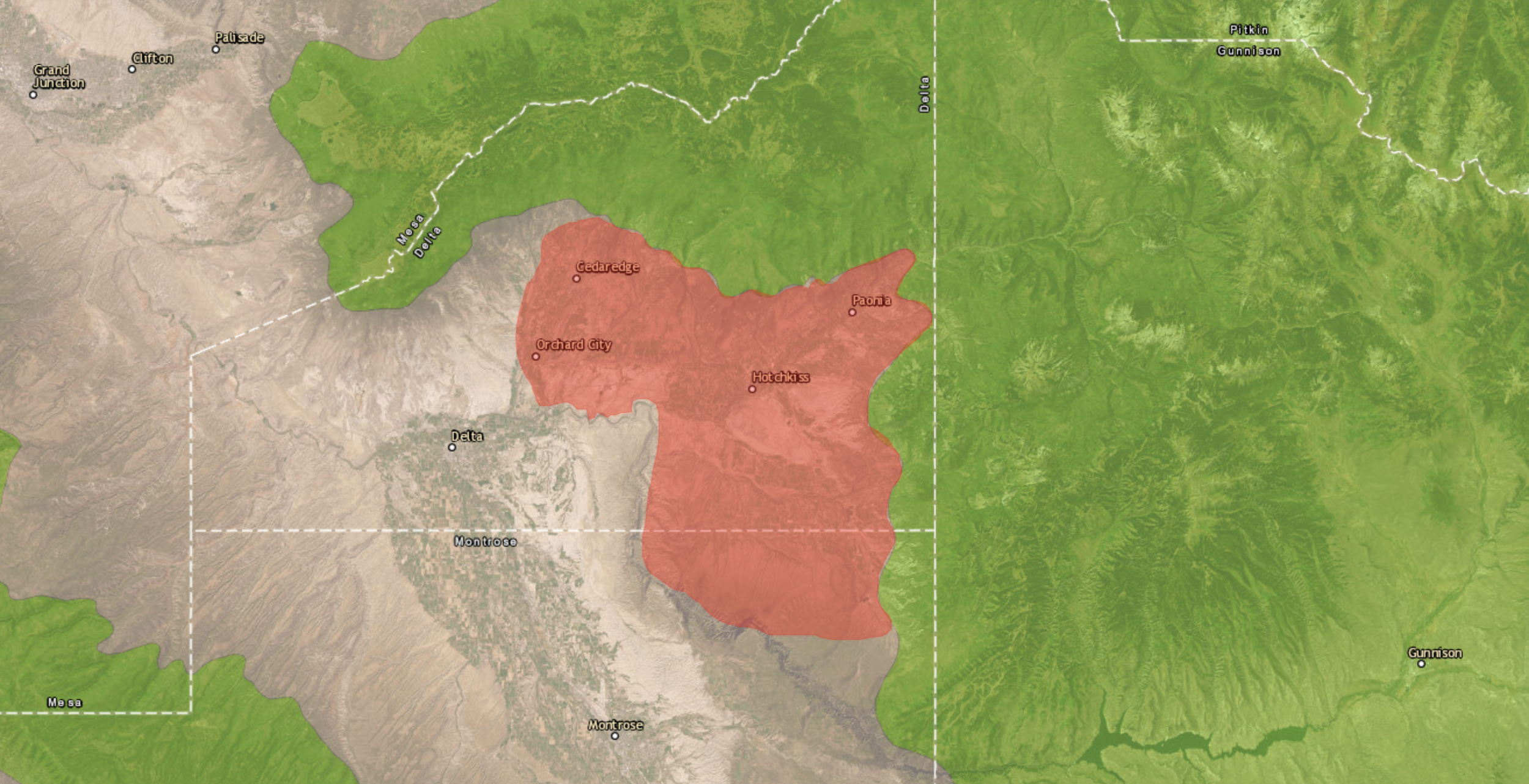Nested Bioregionalism & Regenerative Civilization
Note: The ideas in this blog would not be possible without the foundational work of others that have been pursuing bioregionalism, including Jason Snyder, Joe Brewer and the Design School for Regenerating Earth, Cascadia Department of Bioregion, One Earth and others.
Can you feel it? Systems are failing.
Our societal infrastructure can’t flex and meet the needs of our time and is buckling under pressure. The situation is dire. Climatic volatility will continue to increase, pushing our fragile systems to their breaking point. Widespread habitat destruction, pollution, and overexploitation of resources have us in the midst of the sixth mass extinction event.
We’re going through quite the doozy of a ‘Fourth Turning’ - to use the phrase coined by William Strauss and Neil Howe - a crisis period defined by significant challenges and upheaval, leading to the urgent need for collective action to emerge.
This period of complex crises relates to physical infrastructure and supply chains, but also to the meta-structures of governance, land rights, sense of place, belonging, and purpose. These invisible structures are just as important as the physical ones.
We’re essentially in a drawn-out collapse as the legacy paradigm falls to the forest floor and becomes compost for what will come next. But what comes next? What natural patterns can support the emergence of a regenerative civilization?
A Bioregional Pattern Language
Bioregionalism is a philosophy and natural organizing pattern that defines a sense of place. It can be used to inform a new system of organization and action to support regenerative community development and landscape regeneration.
But what is a Bioregion, anyway? Well, this is a question with varying answers. In short, a bioregion is an ecosystem with similar flora and fauna. It’s a place that has its own unique feel, its own unique story.
This story can change depending on who is telling it, and what they’re talking about. Is the entire Colorado River basin a bioregion? Or is it a tapestry of bioregions that contribute to the same river system? The answer can be both, and that’s ok. Nature is flexible and our frameworks should be too.
Networked Bioregionalism
Part of this flexibility is based upon the recognition that no bioregion exists in isolation. Everything is connected. So if we are to use bioregionalism as the organizing pattern to cultivate a regenerative paradigm, it must not be isolationist. These connected bioregions can be considered networked bioregionalism - where place-based communities are taking action and carrying out participatory governance on a local level while staying connected and sharing resources with the greater community.
This is in line with cosmopolitan localism, which describes resilient place-based communities and economies that stay connected to a global network of other aligned communities. Cosmolocalism and networked bioregionalism strike the balance between globalism and localism. Not too open, not too closed off. Just right.
However, this still leaves us with an ambiguous definition of a bioregion. How big or small are we talking about here? Instead of a one-size-fits-all solution, we can use a flexible system that honors the depth of place.
I call this nested bioregionalism.
The nested layers of bioregional design.
Nested Bioregionalism
If networked bioregionalism is about the horizontal relationships between bioregions, then nested bioregionalism is about the vertical relationships within a bioregion. Together, they can serve as a foundational organizing pattern to combat civilizational decline and support the emergence of a regenerative society.
There are different layers of 'place', and each has its own appropriate forms of organization and action. Honoring this pattern can serve as a guide to anyone hoping to navigate the complexity of the crises we’re facing, and how to actually do something about it.
There are three primary levels to nested bioregionalism: the Federation, the Node, and the Community.
Bioregional Federation
Most definitions of a bioregion are on the large watershed scale. This is because zoomed-out hydrology is one of the highest orders of complex systems that we can see on any given landscape. But that’s a really big area, with many distinct landscapes within it.
For example, the Colorado River connects from the headwaters in the high alpine forests of the Rocky Mountains in Colorado to the Sonoran Desert and the Sea of Cortez on the border of Southern California and Mexico. Well, at least the river used to before it was dammed up and sucked dry.
Those are vastly different landscapes that do not share a sense of place. But they are connected by the water, the life force of any landscape.
Because of the many different landscapes that constitute this pattern level, we can refer to it as a bioregional federation.
An overlay of the Colorado River Basin, the scale of a Bioregional Federation, on top of Bioregional Nodes (Type III Ecoregions).
Bioregional Node
Taking this landscape pattern one layer deeper, we can identify these unique landscapes by their flora, fauna, and climate. Looking at the Colorado River bioregional federation, we can see that it mainly consists of the Wyoming Basin, Southern Rockies, Colorado Plateau, Arizona/New Mexico Mountains and Plateau, Madrean Archipelago, and the Sonoran Desert.
The term ecoregion (a ‘type III ecoregion’, according to the EPA) is often used to describe this layer of landscape pattern. However, it’s kind of confusing because most people likely associate the term ‘bioregionalism’ itself with this scale - of a similar ecosystem type. If bioregionalism is supposed to capture a sense of place, then the federation scale is too large, and the ‘ecoregion’ scale feels closer to a natural definition of ‘place’.
We can call this level a bioregional node.
The Bioregional Nodes of Colorado include the Wyoming Basin, Southern Rockies, High Plains, Southwest Tablelands, Arizona/New Mexico Plateau, and the Colorado Plateaus. Each are unique landscapes, filled with Bioregional Communities.
Bioregional Community
Entering a bioregional node brings us to the community level. This is really where a sense of ‘home’ exists. This level is critical because it’s where the place-based magic happens. These are the local communities that know the nuances of the area, and most importantly are the ones that put things into action. These bioregional communities are the boots on the ground.
This generally lines up with the smaller watershed or tributary level. For example, within the Southern Rockies bioregional node is the Gunnison River watershed, a tributary of the Colorado River. Connected to that smaller river system are distinct communities that have their own identity, like the Roaring Fork Valley.
But it doesn’t have to be based around a river. I’m currently writing these words in the bioregional community I call home, also in the Southern Rockies but in the Peak to Peak region of the Front Range Mountains, east of the Continental Divide at the headwaters of the South Platte River. The bioregional community level is the most local pattern of organization in this framework of nested bioregionalism.
A Bioregional Federation is made of several Bioregional Nodes, which is made of several Bioregional Communities.
The general area of the North Fork Valley Bioregional Community, a rural agricultural area with a strong community identity, centered around the North Fork of the Gunnison River, where the Colorado Plateau meets the Southern Rockies.
Planning on Different Scales
These layers of nested bioregionalism can help us map out a plan for regenerative action on any scale. It can apply to any landscape, anywhere in the world. But it does beg the question, “What is the appropriate form of organization and action at each nested layer?”
For example, a bioregional federation could be most appropriate for lobbying, political action, and large fundraising efforts. A larger landscape lends itself well to higher-level planning and action.
A bioregional node is what we at ReCommon are using as the most appropriate scale for forming title-holding legal entities like regenerative community land trusts. It’s not too large to lose the sense of place, and not too small to need a new legal entity in every valley.
A bioregional community is the scale most appropriate for project development, master planning, and social organization. It’s important to keep the governance local and receive support from the layers above.
The Foundation for Regeneration
The complex crises of our time need solutions that are aligned with nature. Bioregionalism is a natural organizing pattern that can inform how we organize to effectively respond to these crises.
By viewing bioregionalism as a series of nested layers of place, each with its own appropriate forms of organization, we can better navigate the complexity of these interdependent relationships and leverage them into effective action.
The civilizational infrastructure that we must build to replace the systems failing all around us should be based upon a celebration of place, honoring the local communities while staying connected to the global community of others doing the same work in a different place.
During these turbulent times of transformation, nested bioregionalism can support the emergence of resilient communities and regenerative civilization.




